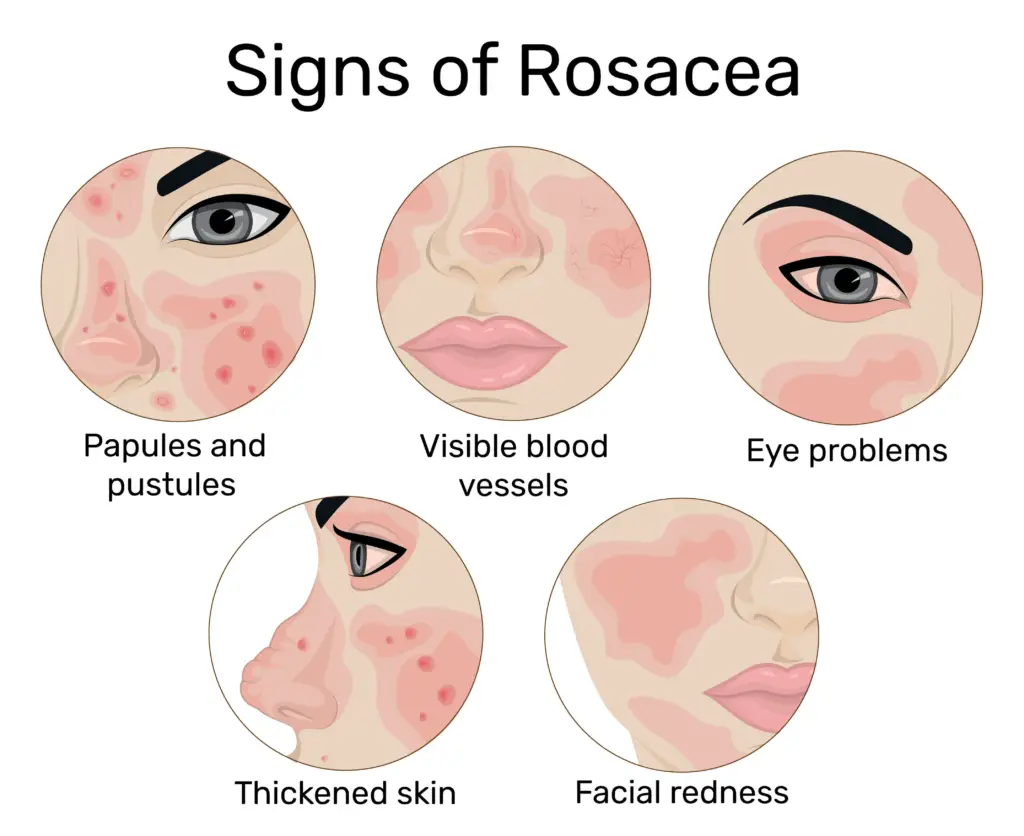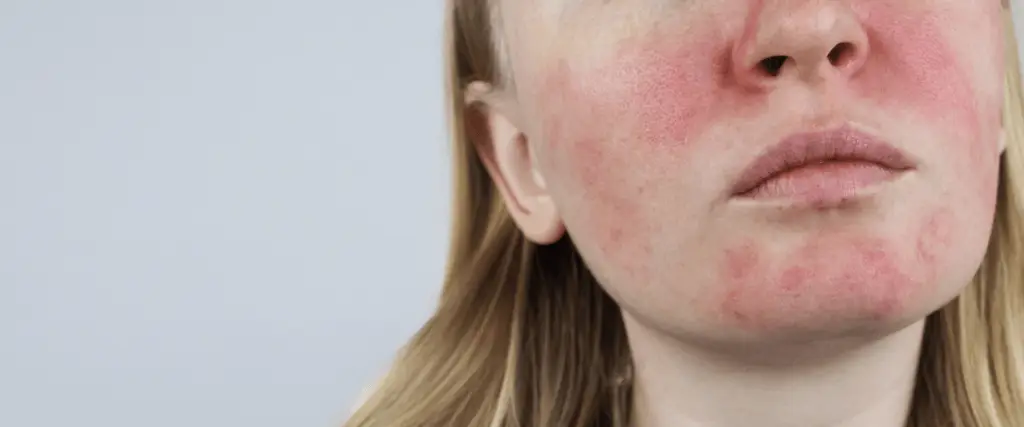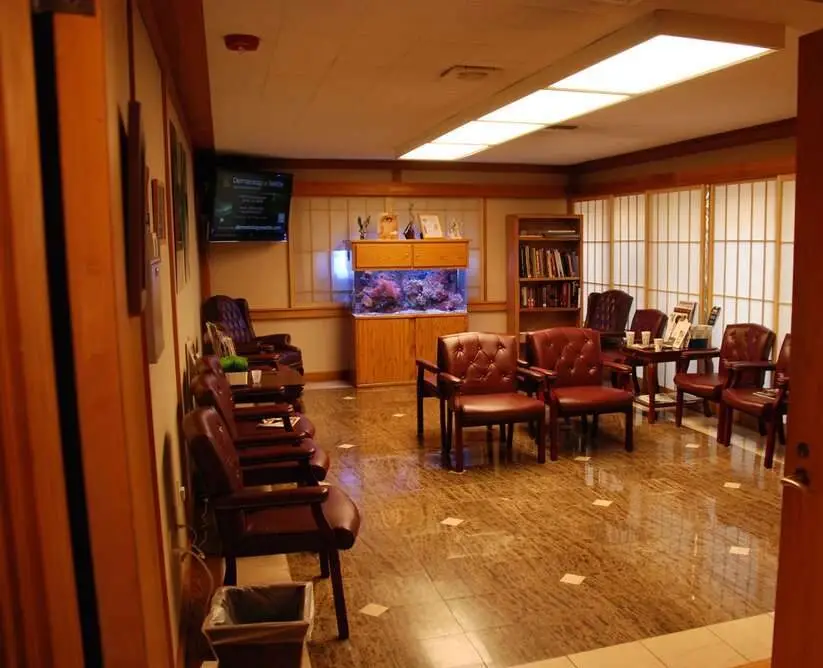Rosacea
What is rosacea and what are the symptoms?
It begins as a blush/flush more intense than others, and with time can cause permanent redness. It can spread from nose/cheek region to other parts of the face, and all the way to the chest/back areas. It is possible to have more than one subtype.

There are four subtypes of rosacea:
- Erythematotelangiectatic rosacea: Facial flushing and redness, with visible blood vessels. Skin very often may be sensitive, and even burn or sting. Dryness may occur with roughness or scaling.
- Ocular rosacea, which occurs in and around the eyes. Eyes and eyelids red, swollen, watery or bloodshot, gritty feel like sand, burning or stinging, dryness, sensitivity to light, blurred vision, broken blood vessels visible on an eyelid, a cyst on the eyelid. Often a person cannot see as well as before.
- Papulopustular rosacea, which is acne-like breakouts with redness and swelling. Skin appears oily and may be very sensitive, and sting/burn. There may be raised patches of skin called plaques or visible broken blood vessels, sometimes called spider veins.
- Phymatous rosacea is a rare subtype, where the skin develops a bumpy texture while becoming thicker, especially common in the nose. This is called rhinophyma. The person usually first has symptoms of another subtype. Pores look large, and skin may appear oily, along with broken blood vessels. Skin on the chin, cheeks, forehead, and ears may thicken as well.
How can rosacea affect my lifestyle?
Surveys by the National Rosacea Society have shown that as many as 41% stated that their rosacea caused them to avoid social engagements and public contact. Often patients worry they will get worse or scar, and worry about side effects of treatment. 70% of people studied said that living with rosacea lowered self-esteem and confidence. When rosacea is severe, 70% said the condition affects their work, with almost 30% saying it caused them to miss work. Sometimes the condition causes anxiety because others may think the patient has a drinking problem, due to the associated redness. Studies show that a patient’s quality of life improves when they have fewer symptoms/signs of rosacea.
What causes rosacea to occur in people?
Rosacea is common, with over 14 million people with the condition. Often, people are between 30 and 50 years of age, have fair complexion, and have had a relative with the condition, or severe acne. Women are slightly more likely to get it than men but are not as likely to get as severe a case as men. Children can get rosacea, too. The cause is still being studied by scientists, and it is thought the immune system is involved. H. pylori is a bacteria that causes intestinal infections, is common in rosacea patients, and may contribute. Demodex, a mite common on human skin may be involved, as it appears in large numbers in rosacea patients.

How is this condition diagnosed and treated?
To diagnose rosacea, a dermatologist at Dermatology of Seattle will examine your eyes and skin. First, all symptoms and signs are discovered, which is important because different types of rosacea need different treatments.
There are various ways of treating the condition. Wearing sunscreen helps prevent irritation on a day-to-day basis, and an emollient can encourage the skin to repair. Laser and light therapies are sometimes used, especially to reduce the thickening of the skin. Sometimes antibiotics are prescribed. Some other methods involve dermabrasion or electrocautery. Eye medication is sometimes prescribed for patients with ocular rosacea. While there is no cure for rosacea, many see their rosacea clear, even after almost a decade-long term with the condition. A skin care plan at Dermatology of Seattle can help manage rosacea.
Hear from Our Patients:

Get in Touch Now
Have questions or need assistance? Make sure to use our contact form for all inquiries.
